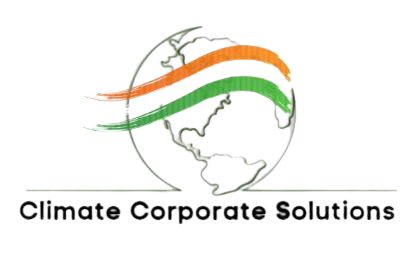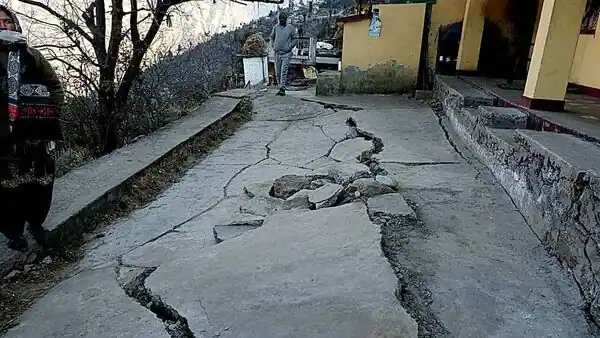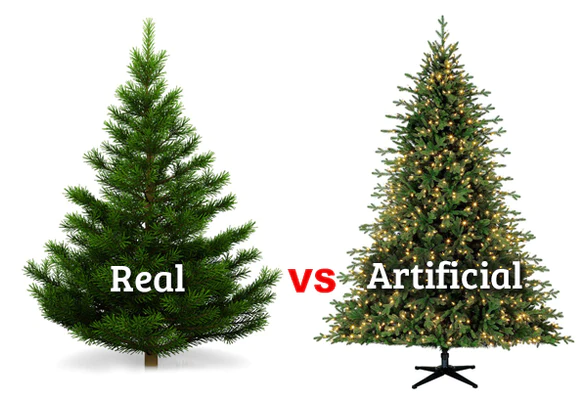
MILLENIUM DEVELOPMENT GOALS
The Millennium Development Goals, or the MDGs, resulted from a discussion amongst world leaders in New York in September 2000. One hundred eighty-nine (189) countries adopted the United Nations Millennium Declaration, which evolved into the MDG.
The ambitious targets adopted under the MDGs ranged from halving extreme poverty and reducing maternal mortality by three-quarters to achieving universal primary schooling and halting the spread of HIV/AIDS, which should be met by the end of 2015.
The Millennium Declaration Goals represented a significant break from previous efforts to create a world around sustainable global development. The articulation of specific goals and targets focused on social development, such as education, health, nutrition and water and sanitation, was an unprecedented move away from the focus on macroeconomic growth.
Setting goals and targets and establishing monitoring and accountability frameworks was another significant shift, where formulating the MDGs must be seen in the context of widespread criticism of the United Nations (UN) during the two decades before 2000. There remains an active debate as to what extent setting a limited number of goals and targets has helped or hindered overall development worldwide.
A study by Charles Kenny and Andy Sumner recommends that “MDGs boost aid flows and redirect them towards smaller, poorer countries and targeted areas such as education and public health“. It further recommended that there is good evidence that this has translated into accelerated progress in many parts of the world.
The Millennium Development Goals (MDGs) were eight international development goals for the year 2015 that were established following the Millennium Summit of the United Nations in 2000, following the adoption of the United Nations Millennium Declaration. Following the OECD DAC International Development Goals, Development Ministers agreed on the “Shaping the 21st Century Strategy” goals. The Sustainable Development Goals, or the SDGs, succeeded the MDGs in 2016.
The MDGs were eight (8) goals measured by 21 targets. To accelerate the progress of these MDGs, the G8 finance ministers agreed in June 2005 to provide sufficient funds to the World Bank, the International Monetary Fund (IMF) and the African Development Bank (AfDB) and cancel the $40 to $55 billion in debt owed by members of the heavily indebted poor countries (HIPC). The aim was to allow them to redirect resources to programs for improving health and education and alleviating poverty.
The MDGs were formed around the interventions that aimed to evaluate the following:
· Improvements required to meet the millennium development goals (MDG) for water supply (by halving 2015 the proportion of those without access to safe drinking water)
· Meet the water MDG plus halving by 2015 the proportion of those without access to adequate sanitation
· Increasing access to improved water and sanitation for everyone
· Providing disinfection at point-of-use over and above, increasing access to improved water supply and sanitation
· Providing regulated piped water supply in the house and sewage connection with partial sewerage for everyone
The 8 Millieum Development Goals
The eight MDGs are:
Goal 1: Eradicate extreme poverty & Hunger Goal 2: Achieve universal primary education Goal 3: Promote gender equality & empower women Goal 4: Reduce child mortality Goal 5: Improve maternal health Goal 6: Combat HIV/AIDS, malaria & other diseases Goal 7: Ensure environmental sustainability Goal 8: Develop a global partnership for the development
Let us explore the goals in detail:
GOAL 1: ERADICATE EXTREME POVERTY AND HUNGER
2015 Target: Halve the proportion of people living on less than a dollar a day and those who suffer from Hunger.
After the Millennium Development Goals came into practice, extreme poverty has declined significantly over the past two decades. During the 1990s, half of the global population of the developing world lived on $1.25 a day, which dropped to 14% in 2015.
Additionally, the number of people living in extreme poverty worldwide has declined by more than half, falling from 1.9 billion in 1990 to 836 million in 2015; it is interesting to note that much progress happened after the 2000s. Furthermore, people in the working middle class, living on more than $4 a day, have tripled between 1991 and 2015.
Efforts under MDG-I reduced the percentage of undernourished people in developing nations has fallen by half since 1990, i.e., from 23.3% in 1990–1992 to 12.9% in 2014–2016. The goal to eradicate poverty can be achieved with the help of three targets:
Target 1A: The first target is to halve, between 1990 and 2015, the proportion of people whose income is less than one dollar a day. The indicators to monitor the progress of the target are:
· The proportion of the population below $1 (PPP) per day
· Poverty gap ratio
· Share of poorest quintile in national Consumption
Target 1B: The second target is to achieve full and productive employment and decent work for all, including women and young people. The indicators to monitor the progress of the target are:
· The growth rate of GDP per person employed
· Employment-to-population ratio
· The proportion of employed people living below $1 (PPP) per day
· The proportion of own-account and contributing family workers in total employment
GOAL 2: ACHIEVE UNIVERSAL PRIMARY EDUCATION
The aim is to ensure that, by 2015, children, boys and girls alike, will be able to complete an entire course of primary schooling. After adopting the millennium development goal, substantial growth has been achieved, namely:
· The primary school net enrolment rate in the developing regions increased to 91% in 2015 from 83% in 2000.
· The number of out-of-school children of primary school age worldwide has fallen by almost half, to an estimated 57 million in 2015, down from 100 million in 2000.
· Sub-Saharan Africa recorded the best improvement in primary education of any region since the MDGs were established. The region achieved a 20% increase in the net enrolment rate from 2000 to 2015, which was a gain of 8% between 1990 and 2000.
· The literacy rate among youth aged 15 to 24 has increased globally from 83% to 91% between 1990 and 2015. The gap between women and men has narrowed further.
The goal to achieve universal primary education can be achieved with the help of the following target:
Target 2A: The target aims at ensuring that, by 2015, children everywhere, boys and girls alike, will be able to complete an entire course of primary schooling. The indicators to monitor progress are as follows:
· Net enrollment ratio in primary education
· The proportion of pupils starting grade 1 who reach the last grade of primary
· Literacy rate of 15–24 year-olds, women and men
GOAL 3: PROMOTE GENDER EQUALITY AND EMPOWER WOMEN
The aim is to eliminate gender disparity in primary and secondary education, preferably by 2005 and in all levels of education, no later than 2015. The goal, when implemented, has led to substantial growth, like:
· Many girls are now in school compared to 15 years ago. The developing regions have achieved the goal of eliminating gender disparity in primary, secondary and tertiary education.
· In Southern Asia, only 74 girls were enrolled in primary school for every 100 boys in 1990. Today, 103 girls are enrolled for every 100 boys.
· Women now make up 41% of paid workers outside the agricultural sector, an increase from 35% in 1990.
· Between 1991 and 2015, the proportion of women in vulnerable employment as a share of total female employment declined by 13%. In contrast, vulnerable employment among men fell by 9%.
· Women have gained ground in parliamentary representation in nearly 90% of the 174 countries with data over the past 20 years. The average proportion of women in parliament has nearly doubled during the same period. Nevertheless, still, only one in five members are women.
The goal can be achieved with the help of the following target:
Target 3A: Eliminate gender disparity in primary and secondary education, preferably by 2005, and in all levels of education no later than 2015. The success of the target can be monitored with the help of the following:
· Ratios of girls to boys in primary, secondary and tertiary education
· Share of women in wage employment in the non-agricultural sector
· The proportion of seats held by women in the national parliament
GOAL 4: REDUCE CHILD MORTALITY
The goal is to reduce the under-five mortality rate by two-thirds between 1990 and 2015. The goal, when implemented, led to achieving various goals like:
· The global under-five mortality rate has declined by more than half, dropping from 90 to 43 deaths per 1,000 live births between 1990 and 2015.
· Population growth in developing nations, the death rate for children under five years declined from 12.7 million to 6 million between 1990 to 2015 worldwide.
· Since the early 1990s, the rate of reduction of under-five mortality has more than tripled globally.
· In sub-Saharan Africa, the annual rate of reduction of under-five mortality was over five times faster during 2005–2013 than in 1990–1995.
· Measles vaccination helped prevent nearly 15.6 million deaths between 2000 and 2013. The number of globally reported measles cases declined by 67 per cent for the same period.
· About 84 per cent of children worldwide received at least one dose of measles-containing vaccine in 2013, up from 73 per cent in 2000.
The goal can be achieved by implementing a target, i.e.,
Target 4A: Reduce the under-five mortality rate by two-thirds between 1990 and 2015. The progress of the target can be monitored by:
· Under-five mortality rate
· Infant mortality rate
· The proportion of 1-year-old children immunized against measles
GOAL 5: IMPROVE MATERNAL HEALTH
The target is to achieve universal access to reproductive health and reduce the maternal mortality ratio by three quarters between 1990 and 2015. The goal has led to the universal development of maternal health:
· Since 1990, the maternal mortality ratio has declined by 45% worldwide, and most of the reduction has occurred since 2000.
· In Southern Asia, the maternal mortality ratio declined by 64% between 1990 and 2013; Sub-Saharan Africa fell by 49%.
· More than 71% of births were assisted by skilled health personnel globally in 2014, an increase from 59% in 1990.
· In Northern Africa, the proportion of pregnant women who received four or more antenatal visits increased from 50% to 89% between 1990 and 2014.
· Contraceptive prevalence among women aged 15 to 49, married or in a union, increased from 55% in 1990 to 64% in 2015.
The goal has two targets to be achieved:
Target 5A: The maternal mortality ratio is reduced by three quarters between 1990 and 2015. The target’s progress can be monitored with the help of the following:
· Maternal mortality ratio
· The proportion of births attended by skilled health personnel
Target 5B: Achieve, by 2015, universal access to reproductive health. The target’s progress can be monitored with the help of the following:
· Contraceptive prevalence rate
· Adolescent birth rate
· Antenatal care coverage (at least one visit and at least four visits)
· Unmet need for family planning
GOAL 6: COMBAT HIV/AIDS, MALARIA AND OTHER DISEASES
The goal aims to have halted by 2015 and begun to reverse the spread of HIV/AIDS, achieve, by 2010, universal access to treatment for HIV/AIDS for all those who need it, and have halted by 2015 and begun to reverse the Incidence of malaria and other major diseases. The goal, when enforced, led to great results, and some of these results are:
· New HIV infections must fell by 40% between 2000 and 2013, i.e., from an estimated 3.5 million cases to 2.1 million infections.
· By June 2014, 13.6 million people living with HIV were receiving Antiretroviral Therapy (ART) globally, an increase from 8 million in 2003. ART averted 7.6 million deaths from AIDS between 1995 and 2013.
· In sub-Saharan Africa, nearly 6.2 million malaria deaths have been averted between 2000 and 2015, primarily of children under five. Furthermore, the global malaria incidence rate fell by an estimated 37% and the mortality rate by 58%.
· Nearly 900 million insecticide-treated mosquito nets were delivered to malaria-endemic nations in sub- Saharan Africa between 2004 and 2014.
· Between 2000 and 2013, tuberculosis prevention and its diagnosis and treatment interventions saved an estimated 37 million lives. Therefore, the tuberculosis mortality rate fell by 45% and the prevalence rate by 41% between 1990 and 2013.
It takes three sub-targets to achieve the goal of combating HIV and other diseases. These targets are:
Target 6A: Have halted by 2015 and begun to reverse the spread of HIV/AIDS. The progress to achieve the target can be monitored by:
· HIV prevalence among the population aged 15–24 years
· Condom use at last high-risk sex
· The proportion of the population aged 15–24 years with comprehensive correct knowledge of HIV/AIDS
· The ratio of school attendance of orphans to school attendance of nonorphans aged 10–14 years
Target 6B: The target is to achieve, by 2010, universal access to treatment for HIV/AIDS for all those who need it. The progress of the target can be monitored by:
· The proportion of the population with advanced HIV infection with access to antiretroviral drugs
Target 6C: The target aims to have halted by 2015 and begun to reverse the Incidence of malaria and other major diseases. The progress of the target can be monitored by:
· Incidence and death rates associated with malaria
· The proportion of children sleeping under insecticide-treated bednets
· The proportion of children under 5 with fever who are treated with appropriate antimalarial drugs
· Incidence, prevalence, and death rates associated with tuberculosis
· The proportion of tuberculosis cases detected and cured under directly observed treatment short course
GOAL 7: ENSURE ENVIRONMENTAL SUSTAINABILITY
The goal discusses integrating sustainable development principles into country policies and programmes and reversing the loss of environmental resources. The goal further discusses reducing biodiversity loss, achieving, by 2010, a significant reduction in the rate of loss. Thirdly, the goal mentions that by 2015, nearly half of the population will be without sustainable access to safe drinking water and basic sanitation. Finally, it discusses that by 2020, to have achieved a significant improvement in the lives of at least 100 million slum dwellers.
The goal, when implemented, made tremendous progress for the nations. Some of the examples are:
· Ozone-depleting substances have been eliminated since 1990, and the same will recover by the middle of the 21st century.
· Many regions’ terrestrial and marine protected areas have increased substantially since 1990. In Latin The coverage of terrestrial protected areas in America and the Caribbean rose from 8.8% to 23.4% between 1990 and 2014.
· In 2015, 91% of the global population used an improved drinking water source, compared to 76% in 1990.
· Of the 2.6 billion people who have gained access to improved drinking water since 1990, i.e., 1.9 billion gained access to piped drinking water on premises.
· Globally, 147 countries have met the drinking water target, 95 countries have met the sanitation target, and 77 countries have met both.
· Worldwide, 2.1 billion people have gained access to improved sanitation. The proportion of people practising open defecation has fallen almost by half since 1990.
· The percentage of people living in the slums of developing nations fell from 39.4% in 2000 to 29.7% in 2014.
Four sub-targets can achieve the goal; these are:
Target 7A: The aim is to integrate the principles of sustainable development into country policies and programmes and reverse the loss of environmental resources. The following parameters can monitor the progress of the target:
· The proportion of land area covered by forest
· CO2 emissions, total, per capita, and per $1 GDP (PPP)
· Consumption of ozone-depleting substances
· The proportion of fish stocks within safe biological limits
· The proportion of total water resources used
Target 7B: The aim is to reduce biodiversity loss, achieving, by 2010, a significant reduction in the rate of loss. The progress of the target can be monitored by:
· The proportion of terrestrial and marine areas protected
· The proportion of species threatened with extinction
Target 7C: The is to halve, by 2015, the proportion of people without sustainable access to safe drinking water and basic sanitation. The same can be achieved by:
· The proportion of the population using an improved drinking water source
· The proportion of the population using an improved sanitation facility
Target 7D: The objective is, by 2020, to significantly improve the lives of at least 100 million slum dwellers. The progress can be monitored by:
· The proportion of the urban population living in slums
GOAL 8: DEVELOP A GLOBAL PARTNERSHIP FOR THE DEVELOPMENT
One of the essential aspects of Millennium Development Goals is the goal aims at achieving the following:
- Develop an open, rule-based, predictable, non-discriminatory trading and financial system.
- Address the unique needs of the least developed countries
- Address the special needs of landlocked developing countries and small island developing States (through the Programme of Action for the Sustainable Development of Small Island Developing States and the outcome of the twenty-second extraordinary session of the General Assembly).
- Deal comprehensively with the debt problems of developing countries through national and international measures to make debt sustainable in the long term.
- In cooperation with pharmaceutical companies, provide access to affordable essential drugs in developing countries.
- In cooperation with the private sector, make available the benefits of new technologies, especially information and communications.
The goal has achieved much success after being implemented. Some of the highlights of the success of the goal are as follows:
a. Official development assistance from developed countries increased by 66% in real terms between 2000 and 2014, thus, reaching $135.2 billion.
b. In 2014, Denmark, Luxembourg, Norway, Sweden and the United Kingdom continued to exceed the United Nations’ official development assistance target of 0.7% of gross national income.
c. In 2014, 79% of imports from developing to developed countries were admitted duty-free, up from 65% in 2000.
d. The proportion of external debt service to export revenue in developing countries fell from 12% in 2000 to 3% in 2013.
e. As of 2015, 95% of the world’s population is covered by a mobile-cellular signal.
f. Mobile-cellular subscriptions have grown almost tenfold in the last 15 years, i.e., from 738 million in 2000 to over 7 billion in 2015.
g. Internet penetration has grown from just over 6% of the world’s population in 2000 to 43% in 2015. As a result, 3.2 billion people are linked to a global network of content and applications.
The development of the global partnership was based on achieving six significant targets. These are:
Target 8A: The target aimed to develop further an open, rule-based, predictable, non-discriminatory trading and financial system, which further includes a commitment to good governance, development and poverty reduction, both nationally and internationally. The progress of the target can be monitored by:
Some of the indicators listed below are monitored separately for the least developed countries (LDCs), Africa, landlocked developing countries, and small island developing States. Official development assistance (ODA):
· Net ODA, total and to the least developed countries, as a percentage of OECD/ DAC donors’ gross National income (GDP).
· The proportion of total bilateral, sector-allocable ODA of OECD/DAC donors to essential social services (basic education, primary health care, nutrition, safe water and sanitation).
Target 8B: The target aims to address the unique needs of the least developed countries. It includes tariff and quota-free access for the least developed countries’ exports, an enhanced programme of debt relief for heavily indebted poor countries (HIPC), cancellation of official bilateral debt, and a more generous ODA for countries committed to poverty reduction. The progress is monitored by:
· The proportion of bilateral official development assistance of OECD/DAC donors that is untied
· ODA received in landlocked developing countries as a proportion of their gross national incomes
· ODA received in small island developing States as a proportion of their gross national incomes
Target 8C: The aim is to address the unique needs of landlocked developing countries and small island developing States (through the Programme of Action for the Sustainable Development of Small Island Developing States and the outcome of the twenty-second extraordinary session of the General Assembly). The progress in Market Access can be monitored:
· The proportion of total developed country imports (by value and excluding arms) from developing countries and least developed countries admitted free of duty
· Average tariffs imposed by developed countries on agricultural products and textiles, and clothing from developing countries
· Agricultural support estimate for OECD countries as a percentage of their gross domestic product
· The proportion of ODA provided to help build trade capacity
Target 8D: The aim is to deal comprehensively with the debt problems of developing countries through national and international measures to make debt sustainable in the long term. The progress in terms of debt sustainability can be monitored as follows:
· Total number of countries that have reached their HIPC decision points and number that have reached their HIPC completion points (cumulative)
· Debt relief committed under HIPC and MDRI Initiatives
· Debt service as a percentage of exports of goods and services
Target 8E: The aim is to cooperate with pharmaceutical companies and provide access to affordable essential drugs in developing countries. The progress can be monitored as follows:
· The proportion of the population with access to affordable essential drugs on a sustainable basis
Target 8F: The target aims to cooperate with the private sector and make the benefits of new technologies available, especially information and communications. The progress can be monitored:
· Telephone lines per 100 population
· Cellular subscribers per 100 population
· Internet users per 100 population
Although these MDGs brought together a shared vision of development, representing a global partnership based on a shared responsibility by all countries, the developing countries have the primary responsibility for achieving these Goals. There are still certain limitations that these MDGs had:
- The goals do not capture other commitments made in the Millennium Declaration on governance, transparency, participation and human rights, which are not simple to measure but are essential for achieving the Goals.
- The content of MDGs, involving the rich countries’ commitments, was only discussed and agreed upon internationally. In other forums, such as the Millennium Summit, the Doha Development Agenda (2001), the Monterrey Consensus (2002) and the Paris Declaration (2005), it was demotivating to know that the essence of these commitments was reaffirmed in the Outcome Document of the World Summit in 2005.
- The Goals aim towards a “one-size-fits-all“, which should not be the focus; instead, the goals must be localized and customized to the country’s circumstances. Priorities and the degree of ambition should be locally determined and owned.
- MDGs focussed on overall poverty and neglected the complex set of domestic and international policies, supported by investment leading to income generation through “decent work” in the productive sectors, particularly agriculture and agro-processing, which for nearly all least developed countries are crucial sectors for generating labour-intensive growth for the poor.
Thus, even though the Millenium Development Goals were the first-ever initiative to bring down poverty and accelerate the world towards growth and development, it lacked country-specific development, which is the key to growth worldwide.











